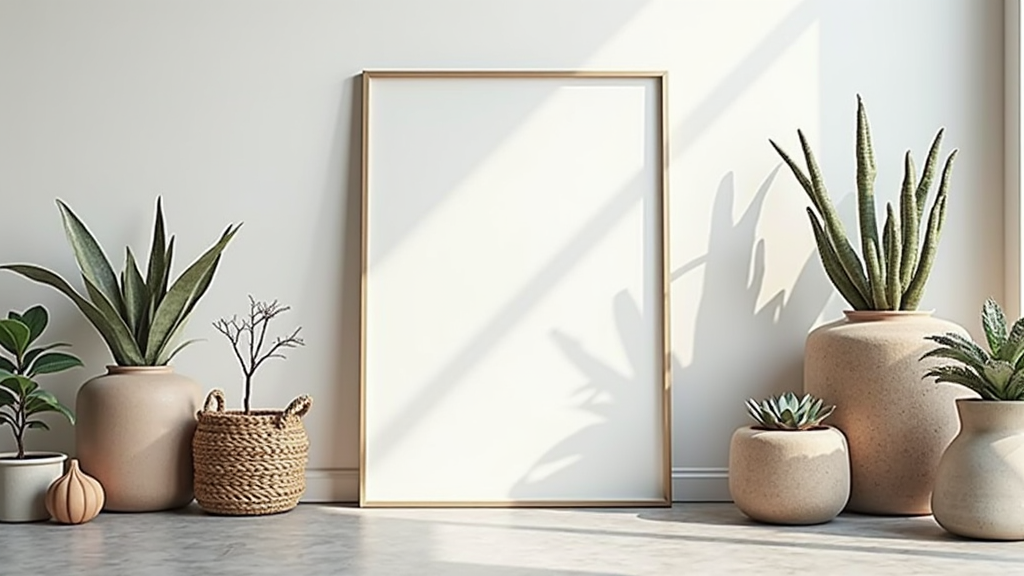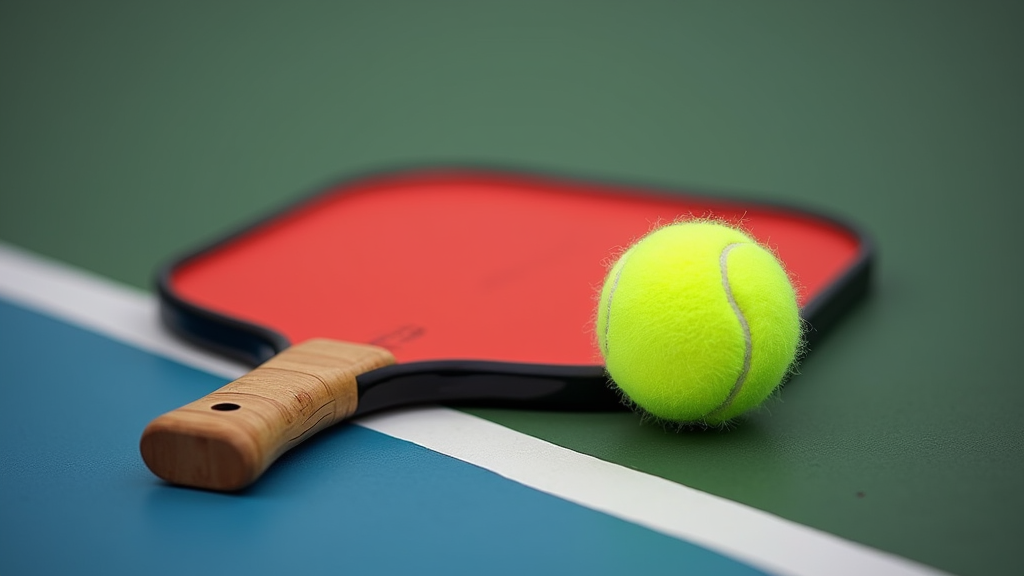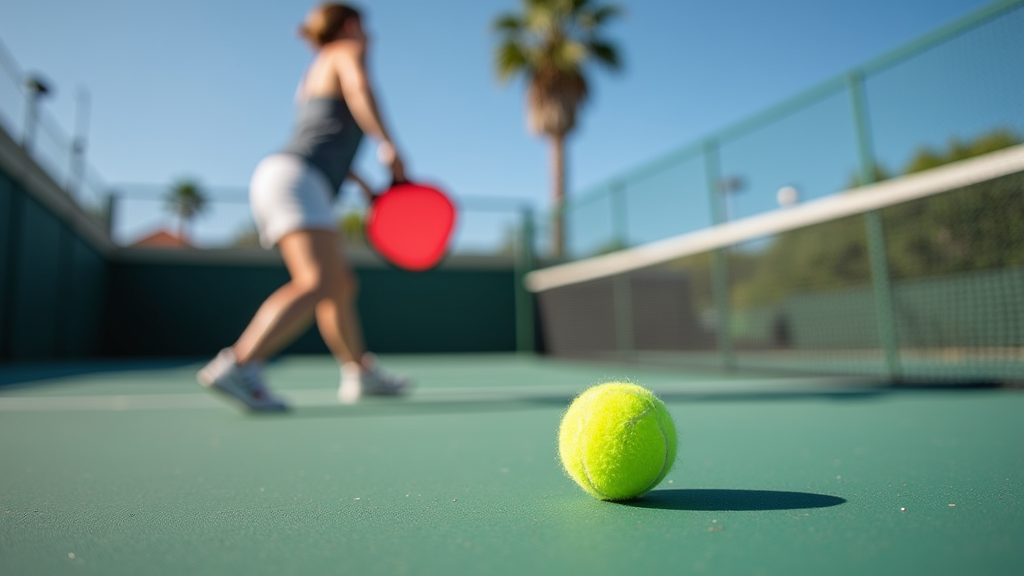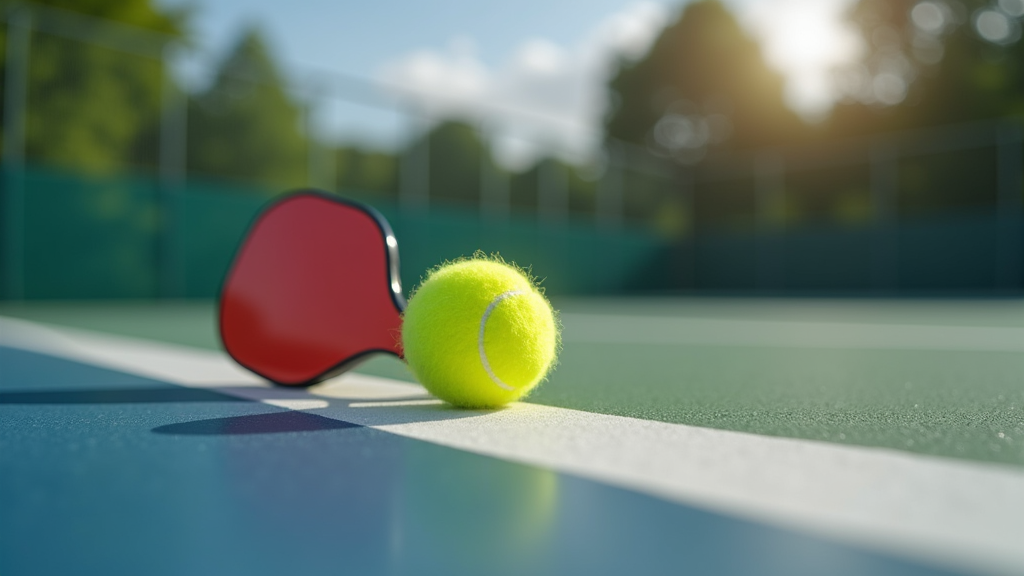Table of Contents
- Introduction
- Understanding the Basics of Pickleball
- Detailed Guide
- Health and Community Benefits
- Injury Prevention and Safety
- Joining the Pickleball Community
Introduction

Overview and Importance
Pickleball is a dynamic and engaging sport that combines elements of tennis, ping-pong, and badminton, creating a unique and accessible experience for players of all skill levels. Played on a badminton-sized court with a lowered net, pickleball uses a perforated plastic ball and solid paddles, making it easier to pick up than many other racquet sports.
The sport’s popularity has exploded in recent years, with over 36 million Americans participating in 2022 alone. This surge in interest highlights pickleball’s broad appeal and its potential to become a mainstay in recreational sports.
Pickleball matters because it is incredibly accessible, socially engaging, and provides numerous health benefits. Its simple rules and gentle learning curve make it easy for beginners to get started, while its strategic depth offers a challenge for more experienced players. The social aspect of pickleball is also a major draw, fostering community and camaraderie among players. Furthermore, the sport offers a great workout, improving cardiovascular health, agility, and hand-eye coordination.
Background
Pickleball has a charmingly quirky origin story. It was invented in 1965 on Bainbridge Island, Washington, by Joel Pritchard, Bill Bell, and Barney McCallum. The trio were looking for a game to entertain their families during the summer months, and using whatever equipment they could find, they cobbled together the first version of pickleball.
Legend has it that the name “pickleball” was inspired by the term “pickle boat” from rowing, which refers to a boat crewed by leftover rowers. While some claim the name came from the Pritchard family’s dog, Pickles, who supposedly loved to chase the ball, the “pickle boat” origin is the more widely accepted story.
In recent years, pickleball has experienced rapid growth in popularity across all age groups. From young children to retirees, people of all ages are discovering the joys of pickleball. This surge in participation has led to the development of dedicated pickleball facilities, professional tournaments, and a growing community of passionate players.
What You’ll Learn
In this guide, you’ll gain a comprehensive understanding of pickleball, from its basic principles to more advanced strategies. We will cover the core concepts of the game, including the rules, scoring system, and basic gameplay techniques, ensuring you have a solid foundation to start playing.
Beyond the fundamentals, we will delve into practical applications of pickleball strategy, exploring techniques to improve your game, and offering advice on injury prevention. Whether you’re a complete beginner or an experienced player looking to refine your skills, this guide will provide you with the knowledge and tools you need to excel on the pickleball court.
Understanding the Basics of Pickleball
Fundamental Concepts
Pickleball, a sport rapidly gaining popularity, blends elements of tennis, badminton, and ping-pong into an engaging and accessible game for all ages and skill levels. To truly appreciate and excel in pickleball, understanding its fundamental concepts is crucial.
Let’s start with some key definitions:
- Pickleball:At its core, pickleball is a paddle sport played on a court smaller than a tennis court. Two or four players use solid paddles to hit a perforated plastic ball over a net.
- Non-Volley Zone (The Kitchen):Often referred to as “The Kitchen,” the non-volley zone is a 7-foot area on both sides of the net. Players are prohibited from volleying (hitting the ball in the air) while standing within this zone. This rule adds a strategic element to the game, encouraging dinking and controlled shot placement.
- Dink:A dink is a soft, strategic shot played near the net, designed to land softly within the non-volley zone. Mastering the dink is essential for controlling the pace of the game and forcing your opponents into difficult positions.
Beyond the definitions, grasping the core principles is equally important:
- Underhand Serve:The serve in pickleball must be executed underhand. This means the paddle must contact the ball below the wrist. This rule promotes a more consistent and less aggressive serve compared to tennis.
- Double-Bounce Rule:After the serve, the ball must bounce once on each side of the court before either team can volley it. This “double-bounce rule” encourages longer rallies and allows players to move into position.
- Non-Volley Zone Restrictions:As mentioned earlier, players cannot volley the ball while standing in the non-volley zone. This rule forces players to step out of the kitchen to hit volleys, adding a layer of tactical complexity to the game.
Essential Components
Now that we’ve covered the foundational concepts, let’s delve into the essential components required to play pickleball.
Here’s what you’ll need to get started:
- Pickleball Paddle:A solid-surface paddle, smaller than a tennis racket but larger than a ping-pong paddle, is essential. Paddles come in various materials and weights, influencing the feel and power of your shots.
- Pickleball Ball (Indoor or Outdoor):Pickleball balls are made of plastic and have holes, similar to a wiffle ball. There are specific balls designed for indoor and outdoor play, each with different characteristics.
- Court with Net, Service Squares, and Non-Volley Zone:A pickleball court is smaller than a tennis court and features a net, service squares, and the crucial non-volley zones on either side of the net.
Let’s examine the key features of these components in more detail:
Primary Aspects:
- Court Size:A pickleball court measures 20 feet wide by 44 feet long. This smaller size compared to a tennis court makes it more accessible and requires less running.
- Net Height:The net is 36 inches high at the sidelines and 34 inches high in the middle. This specific height encourages dinking and strategic shot placement.
Secondary Aspects:
- Paddle Material:Pickleball paddles are commonly made from wood, graphite, or composite materials. Wood paddles are generally more affordable, while graphite and composite paddles offer enhanced performance and feel.
- Ball Type:Indoor pickleball balls are typically lighter and have more holes, making them suitable for indoor play where the wind is not a factor. Outdoor balls are heavier and have fewer holes to resist wind interference.
Important Variations:
- Paddle Weight:Paddle weight can range from 7 to 13 ounces. Lighter paddles offer greater maneuverability, while heavier paddles provide more power. The ideal weight depends on your playing style and preferences.
- Grip Size:Pickleball paddle grips come in various sizes to accommodate different hand sizes. A properly sized grip ensures comfort and control, preventing hand fatigue and improving your game.
Detailed Guide

Preparation
Before stepping onto the pickleball court, proper preparation is crucial for an enjoyable and safe experience. This involves gathering the necessary equipment, setting up the court, and understanding important considerations to tailor your game to your specific needs.
- Required materials:
- Pickleball paddle: Choose a paddle that feels comfortable in your hand. Consider the weight and material, as these factors can significantly impact your control and power.
- Indoor or outdoor pickleball balls: The type of ball you use will depend on whether you’re playing indoors or outdoors. Outdoor balls are typically heavier and more durable to withstand wind and rougher surfaces.
- Appropriate athletic shoes: Select shoes with good lateral support to prevent ankle injuries during quick movements and changes in direction.
- Comfortable athletic wear: Opt for clothing that allows for a full range of motion and wicks away moisture to keep you cool and comfortable.
With the right gear in hand, you’re one step closer to enjoying a great game of pickleball.
- Initial setup:
- Locate a pickleball court: Pickleball courts are smaller than tennis courts, with dimensions of 20′ x 44′. Many public parks and recreation centers now offer dedicated pickleball courts.
- Ensure the net is properly set up: The net should be 36″ high at the sidelines and 34″ high in the middle. Proper net height is essential for fair play.
- Warm-up exercises: Begin with light cardio, such as jogging in place or jumping jacks, followed by stretching to prepare your muscles and prevent injuries. Focus on stretching your arms, legs, and back.
A well-prepared court and body will set the stage for a successful pickleball session.
- Important considerations:
- Skill level: If you’re a beginner, start with the basics and gradually increase the intensity and complexity of your game as you improve. More experienced players can focus on refining their techniques and strategies.
- Physical condition: If you have any underlying health concerns, consult with a doctor or physical therapist before engaging in pickleball. They can provide guidance on how to play safely and avoid injuries.
- Weather conditions: Be mindful of the weather. In hot weather, stay hydrated and wear sunscreen. In cold weather, dress in layers to stay warm. Adjust your playing style as needed based on the conditions.
Taking these considerations into account will help ensure a safe and enjoyable pickleball experience, regardless of your skill level or the external conditions.
Step-by-Step Process
Understanding the fundamental rules and techniques of pickleball is essential for playing the game correctly and enjoying it to the fullest. This section provides a clear, step-by-step guide to get you started.
- Clear instructions:
- Serve: The serve must be underhand, with the paddle below the waist. The ball must be hit diagonally across the court and land within the service box.
- Double-Bounce Rule: After the serve, the ball must bounce once on each side of the net before either team can volley it. This rule is known as the double-bounce rule and is unique to pickleball.
- Volley: A volley is hitting the ball in the air before it bounces. Volleying is not allowed within the non-volley zone, also known as the “kitchen,” which extends 7 feet from the net on both sides.
- Scoring: Points are scored only by the serving team. A team scores a point when the opposing team faults, such as by hitting the ball out of bounds or failing to let it bounce twice after the serve.
Mastering these basic rules is the first step towards becoming a proficient pickleball player.
- Best practices:
- Proper grip: The continental grip is a versatile grip that allows for both forehand and backhand shots. Experiment with different grips to find what feels most comfortable and effective for you.
- Footwork: Quick footwork is crucial for moving around the court and positioning yourself for shots. Focus on moving quickly to the non-volley zone to control the pace of the game.
- Communication: In doubles play, communication with your partner is key. Call out shots, coordinate your movements, and work together to cover the court effectively.
Incorporating these best practices into your game will significantly improve your performance and enjoyment of pickleball.
- Common mistakes to avoid:
- Serving overhand: Remember that the serve must always be underhand. Serving overhand is a fault.
- Volleying in the non-volley zone: Avoid volleying the ball while standing in the non-volley zone. This is a common mistake, especially for beginners.
- Neglecting the double-bounce rule: Always remember to let the ball bounce once on each side after the serve before volleying. Failing to do so is a fault.
Being aware of these common mistakes and actively working to avoid them will help you improve your game and avoid unnecessary faults.
Advanced Techniques
Once you’ve mastered the basics of pickleball, you can start exploring advanced techniques to elevate your game to the next level. This section delves into expert tips, optimization methods, and troubleshooting advice to help you refine your skills.
- Expert tips:
- Dinking: Dinking involves hitting soft shots that land just over the net in the non-volley zone. This technique is used to control the pace of the game and force your opponents to approach the net.
- Blocking: Blocking is a defensive technique used to neutralize aggressive shots from your opponents. It involves using a soft paddle face to absorb the impact of the ball and redirect it back over the net.
- Strategic Placement: Aim for your opponents’ weaknesses. Identify their weaker side or areas where they struggle to move quickly, and target those areas with your shots.
These expert tips can provide a competitive edge and help you outmaneuver your opponents.
- Optimization methods:
- Vary your serves: Don’t become predictable with your serves. Change the speed, placement, and spin of your serves to keep your opponents guessing.
- Master different grips: While the continental grip is versatile, learning other grips, such as the eastern and western grips, can give you more control over your shots and allow you to generate more power.
- Improve reaction time: Practice drills that focus on enhancing your reflexes and reaction time. This will help you react quickly to your opponents’ shots and make more accurate returns.
By optimizing these aspects of your game, you can maximize your potential and become a more well-rounded player.
- Troubleshooting:
- Ball frequently going out: If you’re consistently hitting the ball out of bounds, adjust your paddle angle to impart more topspin, which will help bring the ball down within the court.
- Difficulty with dinks: Dinking requires a soft touch and precise placement. Focus on using your wrist to control the paddle face and aim for a spot just over the net in the non-volley zone.
- Struggles with serves: Consistency and accuracy are key to a good serve. Practice your serve regularly, focusing on hitting the ball with the same motion and aiming for the same target each time.
Addressing these common issues and implementing the suggested solutions will help you overcome challenges and continue to improve your pickleball skills.
Health and Community Benefits
Physical Advantages
Pickleball offers a fantastic array of physical benefits, making it an appealing choice for individuals of all ages and fitness levels. The dynamic nature of the game provides a comprehensive workout that targets various aspects of physical health.
- Cardiovascular fitness:The constant movement involved in pickleball, from quick sprints to strategic positioning, significantly improves cardiovascular health. Regular play strengthens the heart muscle, enhances blood circulation, and boosts overall endurance.
- Muscular strength:Pickleball engages numerous muscle groups, contributing to increased muscular strength. The arms are used for hitting the ball, the legs for court coverage, and the core for stability and power. This full-body engagement leads to balanced muscle development and improved overall strength.
- Coordination:Pickleball is an excellent way to enhance hand-eye coordination and agility. The fast-paced nature of the game requires players to react quickly and accurately, improving reflexes and overall coordination.
Mental and Social Benefits
Beyond the physical advantages, pickleball offers significant mental and social benefits that contribute to overall well-being. The engaging and interactive nature of the sport fosters cognitive function and social connections.
- Reaction time:The quick volleys and strategic plays in pickleball sharpen reflexes and enhance cognitive function. Players must constantly anticipate their opponent’s moves and react swiftly, improving reaction time and mental agility.
- Stress reduction:Pickleball provides a fun and engaging activity that can effectively relieve stress. The focus required during gameplay helps to distract from daily worries, promoting relaxation and mental well-being. The endorphins released during physical activity further contribute to stress reduction and mood enhancement.
- Social interaction:Pickleball fosters a sense of community and provides opportunities for social interaction. Whether playing in organized leagues or casual games, players connect with others who share a common interest, building friendships and social bonds.
- Short-term memory:The need to remember scores, rules, and strategies during a pickleball game can improve short-term memory retention. Engaging in these mental exercises helps to keep the mind sharp and enhances cognitive function.
Suitability for Older Adults
Pickleball is particularly well-suited for older adults due to its low-impact nature and numerous health benefits. It’s a fantastic way for seniors to stay active, maintain their physical and mental health, and enjoy a vibrant social life.
- Low-impact:Pickleball is gentle on the joints, making it an ideal exercise option for older adults who may experience joint pain or stiffness. The movements involved are less jarring than in high-impact sports, reducing the risk of injury.
- Balance and agility:The game improves balance and agility, which are crucial for preventing falls in older adults. The lateral movements and quick reactions required in pickleball help to strengthen muscles and improve coordination, reducing the risk of falls and promoting overall stability.
- Life satisfaction:Studies suggest that engaging in regular physical activity, such as pickleball, can increase life satisfaction in older adults. The combination of physical exercise, social interaction, and mental stimulation contributes to a sense of well-being and improved quality of life.
Injury Prevention and Safety

Common Injuries
Pickleball, while generally low-impact, does come with its share of potential injuries if proper precautions aren’t taken. Understanding the common ailments can help you anticipate and mitigate risks, keeping you on the court and enjoying the game.
- Achilles tendon strains:The Achilles tendon, located at the back of your ankle, is crucial for movements like serving and quick dashes to the net. Overexertion or inadequate warm-up can lead to strains, causing pain and limiting mobility.
- Rotator cuff issues:Repeated overhead motions, especially during serves and overhead slams, can put stress on the rotator cuff muscles in the shoulder. This can result in inflammation, strains, or even tears over time.
- Lower back strains:The twisting and bending involved in pickleball can sometimes lead to lower back strains, particularly if you have pre-existing back issues or poor core strength.
Prevention Tips
Fortunately, many pickleball injuries are preventable with the right approach. By incorporating these strategies into your routine, you can significantly reduce your risk and play safely for years to come.
- Proper techniques:Learning and practicing correct form is paramount. Consider taking lessons from a certified instructor to refine your strokes and footwork, minimizing unnecessary strain on your body.
- Warm-up:Never skip your warm-up! Spend at least 10-15 minutes preparing your muscles before each game. Include dynamic stretches like arm circles, leg swings, and torso twists to increase blood flow and flexibility.
- Appropriate shoes:Wearing the right footwear is crucial for pickleball. Choose shoes with good lateral support to prevent ankle sprains and provide stability during quick movements. Tennis or court shoes are generally a good choice.
- Stabilizing stance:Maintaining a balanced posture is key to preventing injuries. Keep your knees slightly bent, your core engaged, and your weight evenly distributed to provide a stable base for movement.
- Avoid backward runs:Running backward can be awkward and increase the risk of falls and ankle injuries. Instead, practice turning and moving forward to reach the ball whenever possible.
- Prevent fatigue:Fatigue can compromise your form and increase your susceptibility to injuries. Take regular breaks during longer matches, stay hydrated by drinking plenty of water, and listen to your body when it needs rest.
Getting Involved Responsibly
Approaching pickleball responsibly means being mindful of your physical limitations and taking steps to ensure your safety and well-being.
- Consultations:If you’re new to pickleball or have pre-existing health conditions, consult with a physical therapist or doctor before starting. They can assess your fitness level, provide personalized advice, and help you develop a safe training plan.
- Gradual Progression:Avoid doing too much too soon. Start slowly and gradually increase the intensity and duration of your play. This allows your body to adapt and reduces the risk of overuse injuries.
- Listen to Your Body:Pay attention to any pain or discomfort you experience while playing. Don’t push through pain; instead, stop and rest. Ignoring pain can lead to more serious injuries and prolonged recovery times.
Joining the Pickleball Community
Finding Local Groups
One of the best aspects of pickleball is its vibrant and welcoming community. Getting involved is easier than you might think, with numerous avenues available to connect with fellow players in your area. The first step is often finding local groups and organizations that cater to pickleball enthusiasts.
Online resources are invaluable in this search. Websites and apps dedicated to pickleball often feature directories of local clubs, groups, and even individual players looking for partners. These platforms allow you to filter by location and skill level, ensuring you find a group that matches your needs and abilities. Take some time to explore these resources and see what’s available in your vicinity.
Don’t overlook your local community centers. Many community centers offer pickleball programs, ranging from beginner lessons to organized open play sessions. These programs are a fantastic way to learn the basics, meet other players in a relaxed environment, and gradually improve your skills. Check the schedules and offerings of community centers near you to see if they have any pickleball activities.
For a more structured and dedicated experience, consider joining a pickleball club. Pickleball clubs typically offer organized play, tournaments, clinics, and social events, providing ample opportunities to hone your skills and connect with other passionate players. While there might be membership fees involved, the benefits of joining a club often outweigh the costs, especially if you’re serious about taking your pickleball game to the next level.
Tips for Beginners
As a beginner, entering the pickleball community can be both exciting and a little daunting. Here are some tips to help you navigate your first steps and make the most of your experience.
First and foremost, be patient with yourself. Learning any new sport takes time and practice, and pickleball is no exception. Don’t get discouraged if you don’t immediately master every shot or strategy. Focus on improving gradually, celebrating small victories, and enjoying the process of learning.
Be open to advice from experienced players. Most pickleball players are happy to share their knowledge and tips with newcomers. Listen attentively to their suggestions, try out different techniques, and don’t be afraid to ask questions. Learning from those who have been playing longer can significantly accelerate your progress.
Finally, be respectful of court etiquette and rules. Pickleball has a unique set of rules and customs that are important to follow. Familiarize yourself with these rules, be mindful of your behavior on the court, and treat your fellow players with courtesy and respect. This will help create a positive and enjoyable environment for everyone.
Enjoy the Game
Ultimately, pickleball is about having fun and enjoying the camaraderie of the community. Remember to focus on the social aspects of the game, connect with your fellow players, and celebrate the joy of playing.
Pickleball is a fantastic way to stay active and improve your overall health and well-being. Regular play can enhance your cardiovascular fitness, strengthen your muscles, improve your coordination, and boost your mood. Embrace the physical benefits of the game and make pickleball a part of your active lifestyle.
So, get out there, join a local group, meet some new people, and have a blast on the pickleball court! The pickleball community is waiting to welcome you with open arms.



